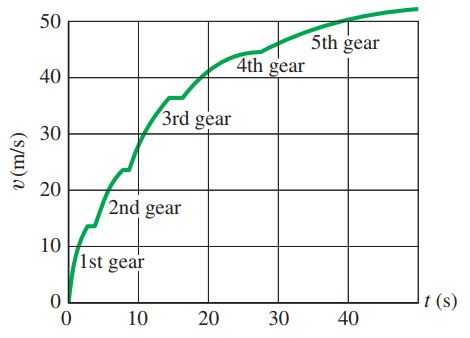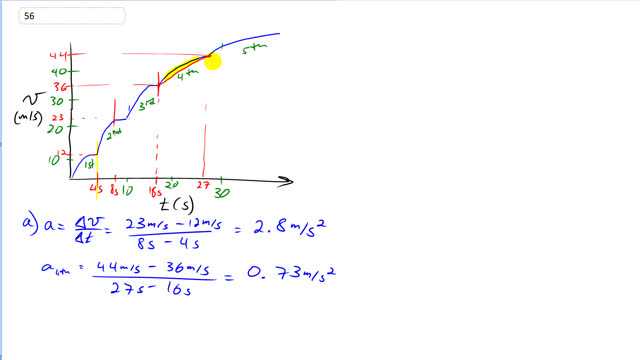
A sports car accelerates approximately as shown in the velocity-time graph of Fig. 2-43. (The short flat spots in the curve represent manual shifting of the gears.) Estimate the car's average acceleration in
- second gear and
- fourth gear.


In order to watch this solution you need to have a subscription.
This is Giancoli Answers with Mr. Dychko. So calculating acceleration on this velocity-time graph, requires finding slope and so we are just looking at the final y-coordinate and the final x-coordinate or the final v f and t f of this point and then v i and t i are at this point and that's gonna estimate the acceleration for the fourth gear. And so that's about 44 meters per second and then minus the initial velocity of about 36 meters per second and divide that by the time of about 27 seconds minus 16 seconds gives 0.73 meters per second squared is the approximate acceleration in the fourth gear. For the second gear, we have about say here's when second gear ends it's just before this flat period when the clutch is pushed in and the shifting is happening to third and so just there that looks about 23 meters per second for the final velocity at the end of the second gear time and that happens at about 8 seconds and then minus the initial velocity that started second gear at and then on the bottom we have minus the time at the initial the time he was initially in second gear at about 4 seconds and that's about 2.8 meters per second squared. And we would expect the acceleration to be greater in second gear than it is in fourth gear when you drive a car, you can you know you feel a little bit of that your head kinda goes back when you are in first and second gear and you can feel that push of the seat whereas when you are in fourth gear already at highway speed almost then you don't really feel that same thrust unless of course you are in some fancy sports car.